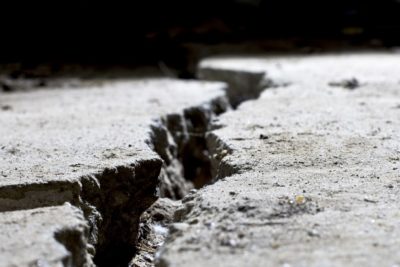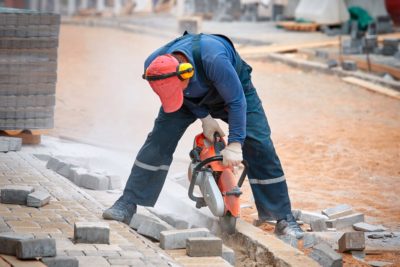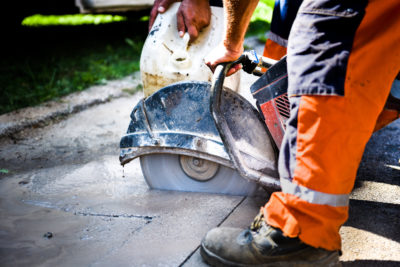When you’re considering the job of concrete grinding, it’s good to be aware of the different types of grinding out there. This way you can be sure of selecting the right type for your particular job. Moreover, you want to be sure that you’re using the correct equipment. And, not least, you need to be certain that you know how to actually do it. Or, if you don’t, you need to know what to ask the contractor you get in to do it for you.
What are the types of concrete grinding?
What is a diamond grinder used for? There are a number of applications that can be boiled down into three main areas of activity. Here they are:
Concrete Scarifying
This is the technique that’s used to remove a significant trip hazard. A classic example is where two concrete surfaces are butted together but not forming a level plane. The opportunity this presents for people and lawsuits to go flying is more than can be countenanced by most heavy workers in the public sphere, so the offending outstanding piece of concrete needs to be eradicated.
Scarifying works by using a machine containing spinning tungsten washers which grind down the imperfection and leave things splendidly smooth and unlikely to upset even the pickiest of pedestrians.
Concrete Preparation Grinding
This is what’s done when a concrete plane is being prepared for the addition of some other component such as tiles or floorboards. All traces of what may have been there previously, such as paint or glue, is removed using a large abrasive spinning disc which smoothes as it spins. The concrete sander used here has to be somewhat more coarse and abrasive than the next option.
Concrete Polishing
This is what you do when given a fine sanding concrete floor task. It’s basically just grinding as per the previous entry, but with a less abrasive spinning disc. The objective is to use your concrete polisher to produce a marvelously shiny floor and remove stains, not to remove any major lumps, bumps or unwanted materials. For these purposes, option 1 or 2 is necessary.
So, before you get busy with the grinding, you need to be sure you’ve assessed the project needs adequately. It’s no good using a polishing disc if you have a serious ridge to tackle. You’ll be going over it until the end of time. And you’ll just end up with a glossier trip hazard.
It’s a great idea to secure for yourself a really thorough picture of the job in hand by using concrete scanning processes, which can reveal what’s going on beneath the surface. This can mean a much-reduced level of unpleasant surprises in store later in the operation.
What Machinery is Involved?
In this piece, we’ll concentrate on the standard floor grinder that tends to be used in options 2 and 3. Option 1 is more of a specialised affair that one can read more about here.
So, what tool do you use to grind concrete? It may come as little surprise to learn that it’s called a concrete grinder. What does this concrete grinding machine consist of? The business end of it is a rotating head, with two main elements: the diamonds and the bond.
Sometimes, people will ask what blade do you use to grind concrete? Well, it’s more accurate to think of the concrete floor grinder as containing an array of diamonds rather than a blade, which implies a sharp metal edge.
The diamonds in the grinder machine tend usually to be synthetic in nature, emulating the hardness and resistance to wear, if not their eminent “stealability”, that diamonds are famous for.
The diamonds are available in a range of sizes, which are characterised by their grit numbers. The higher the grit number, the smaller the diamond. Larger diamonds are used for heavy-duty grinding, and smaller ones for polishing tasks. Diamonds are also available in a range of shapes and strengths in order to fine-tune their suitability for the job.
The bond is all about keeping the diamond nicely in touch with what it’s supposed to be grinding. The bond wears away in a deliberate fashion in order to gradually expose the diamond to the face of the material to be ground. Different materials require different bonds. In the strange and unpredictable world of concrete grinding, it’s only to be expected that hard concrete requires a soft bond setting, and vice versa.
How do you use a concrete diamond grinder? This depends on which sort you have. There are two types of concrete grinders commonly in use. Whichever variety is employed, operator safety is a huge concern. It is of course imperative that the right PPE is utilised. At the very least this should consist of ear and eye protection, as well as regularly serviced and well-maintained grinding equipment.
Handheld
As the name suggests, these are at the daintier end of the concrete floor sander spectrum, being highly mobile and ideal for use in corners and tight spaces. Electrically powered, the unit is easily directed by the operator into the area it’s needed. The dust thrown up (and there’s a lot) is taken out via a shroud over the back portion of the unit which connects to an extraction hose.
Walk Behind
These are the AT-ATs of the trade. They’re the seriously weighty characters that are used for major jobs where space is not at a minimum and it’s all about covering the space quickly and effectively. For this reason, they’re the go-to sander for concrete floor projects of any significant size. They’re powered by electricity, petrol or diesel and are directed by the operator from behind. Again, the copious quantities of dust are safely removed via an extraction hose.
What Concrete Grinding Can Do For You
There’s a range of benefits awaiting the accomplished concrete grinder. The surface will end up looking a whole lot better, which is a bit of a given. Beyond this though, there are advantages in terms of a more resilient finish being produced, as well as an improvement in the surface’s fitness for purpose. A great example of the latter is the greater skid resistance demonstrated by roads that have been subjected to a dose of concrete grinding. Counter-intuitive, but true.
Who Can Help You?
If you’re feeling that all this diamond grind business sounds great but might just be a little beyond your abilities, you can of course call in the experts. If you’ve decided that things are just too abrasive for you, the professionals at Perth’s Diamond Cut Concrete will take the grind out of the job, smoothly delivering a great finish with impressive polish. You’ll be floored.



